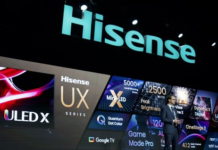Adobe innovates with experimental glare removal
The glare continues to be trial in some of Adobes most innovative experimental work. Multinational software company Adobe recently released a new testing product that is set to change how people transform their pictures. Dubbed “Project See Through,” the tool seeks to strip out reflections on windows in photos. The latter is already in preview with support of Adobe Photoshop or Adobe Bridge for those with Adobe Creative Cloud subscription, with Lightroom support planned in the future.
The technology that uses artificial intelligence
This tool is based on artificial intelligence (AI) technology capable of isolating two distinct images: the themselves and their mirror like implemen on the glass and the object or the landscape behind it. To get such a result, Adobe trained its AI on thousands of non-glare photographs combined into pairs to form composites with simulated reflections. The AI was trained to differ their composite images based on the two images integrated initially , and the accuracy increased as the AI evolved.
Simple and intuitive to use
If you are keen to try this then Adobe encourages users to navigate to the Camera RAW plug in preferences option and select the ‘New AI Settings and Features Panel’. When this been done you will simply need to restart the application from which you are loading the plugin. As soon as the user imports an image, the Glare Remover shall be listed in the removal panel under the header of Distraction Removal . An obvious limitation to be considered However, let me note that this tool is primarily effective when the reflections cover the whole area of the picture. Adobe then was quick to point out that the tool does not work where there are ‘small distant windows ’ and reflections of ‘wine glasses, car bodies or clouds mirrored in water. Therefore, Adobe’s “Project See Through” is a good example of the use of Artificial Intelligence in creative software products. This can only testify to the company’s specific focus on generative AI to continuously provide users with increasingly effective interfaces.
































